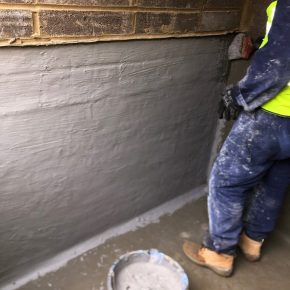
Why women need to play a role in planning and construction
Monika Juneja, Director at Fortitude Dynamics, argues for a representative workforce, highlighting the benefits of employing women in construction and planning.
When it comes to gender inequality, the construction industry is one of the worst offenders. It is estimated that women make up around 11% of the workforce, and only 1% of manual trades.
To make matters worse, there is ostensibly very little being done about this: the majority of the industry appears not to care. This is an incredibly dangerous and misguided attitude.
A representative workforce
In 2017, there is no good reason, and no good excuses, not to have a representative workforce.
The reasons to employ women in construction, and particularly in planning, are numerous and cannot be argued with. Having more women in the workforce benefits not only the industry, but society as a whole.
The first and most obvious reason is gender equality and promoting equal rights. Women being viewed, and therefore being employed, as equal, should be argument enough in itself. Even if achieving gender equality in the industry only benefited the women who gained recognition and employment, it would still be worthwhile.
Moreover, we only have to look to the recent BBC pay scandal to see how negatively inequality is received – in the simplest terms, sexism is bad press. There is no need to put the reputation of an industry at risk, particularly as hiring more women can only have a positive impact.
The importance of representation is now widely recognised across many industries, with women-led film and TV seeing huge successes, and calls for more women in the highest levels of business and government. This should be no different for the construction industry; the more women who are visible and successful in the industry, the more women who can also see themselves thriving in the industry.
Addressing the skills shortage
Given that the construction and development industry is in desperate need of recruitment, with approximately 20% of the workforce nearing the age of retirement, having a larger pool of people to recruit from is essential.
Making women feel welcome in the workplace could increase the recruitment pool massively.
On top of this, many women cite workplace sexism as a reason for not wishing to pursue a career in the industry. This is true for every level and sector, from those in manual trades to female architects and engineers.
A greater number of women in the workforce means more accountability and more general consciousness about discrimination and inequality, which makes the industry more attractive not only to women, but to other individuals from groups that traditionally face social exclusion. More diversity means more diversity of thought, which is essential for every sector of the industry, but especially planning.
Many have asked the question about what a city designed by a woman would look like. This isn’t a matter of different shapes or colours – it’s about infrastructure that is designed for those who are not able-bodied, adult men in full-time employment.
Current cities are designed around a separation of work or office space and home as completely separate. Concerns regarding childcare, location of schools, and outlets are, by design, of secondary importance.
Women in planning
How women’s experience of the world differs would impact the planning of infrastructure on both a small and large scale. On a large scale, it could alter what a town or city is planned around: making life easier for those who have to travel between schools, shops, work and the home on a daily basis.
On a smaller scale, the social exclusion that women have faced would mean more consideration of how building planning affects particular social groups, for example, designing sites in a way that is accessible and promotes social cohesion.
In many ways, planning is an industry unavoidably affected by politics; it deals almost constantly with the ramifications of political decisions and changing ideologies. It is largely the responsibility of politicians to manage the ongoing housing crisis. The argument for having more women in politics speaks for itself; more women in planning is a way of supporting this.
When asked when there will be ‘enough’ women in the supreme court, Ruth Bader Ginsburg answered, ‘when there are nine’.
She says that people are shocked, but there’d been nine men, and no one had ever raised a question about that. This revolutionary attitude is exactly what is required in every industry, and particularly planning and construction, as, at present, this kind of equality seems so far off.
One comment on “Why women need to play a role in planning and construction”
Leave a Reply
You must be logged in to post a comment.
Latest news

31st March 2025
Stannah Lifts urges lift owners to prepare for the PSTN switch over
Stannah Lifts, a leading provider of lift solutions, is calling on businesses and facility managers to act now and upgrade their lift communications systems to ensure they are ready for the UK’s new high-speed, GSM digital network.
Posted in Accessibility, Articles, Building Industry News, Building Products & Structures, Building Regulations & Accreditations, Building Services, Facility Management & Building Services, Health & Safety, Information Technology, Interiors, Lifts, Restoration & Refurbishment, Retrofit & Renovation
31st March 2025
Delta: Lift Pit Waterproofing - Type A solutions
Delta Membranes has recently worked on a project whereby the scope was to provide a waterproofing solution to a newly constructed lift pit for a four-storey residential block.
Posted in Articles, Building Industry News, Building Products & Structures, Building Services, Case Studies, Concrete, Cement, Admixtures, Damp & Waterproofing, Facility Management & Building Services, Restoration & Refurbishment, Retrofit & Renovation
31st March 2025
HMG Paints renew partnership with Belle Vue Aces Speedway
HMG Paints has renewed its partnership with Belle Vue Aces for the 2025 season. This year marks a particularly exciting chapter for Belle Vue Speedway, as the club and National Speedway Stadium will host an electrifying double-header of the FIM Speedway Grand Prix in 2025.
Posted in Articles, Building Industry News, Building Products & Structures, Case Studies, Interiors, Paints, Paints, Coatings & Finishes, Posts, Restoration & Refurbishment, Retrofit & Renovation
31st March 2025
Ideal Heating sponsored CIBSE BPA Engineer of the Year announced
As the sponsor of the Engineer of the Year award at the Chartered Institution of Building Services Engineers (CIBSE) Building Performance Awards, Ideal Heating Commercial was delighted to present the award to Volkan Doda, Head of Design Technologies at Atelier Ten.
Posted in Articles, Awards, Building Associations & Institutes, Building Industry Events, Building Industry News, Building Products & Structures, Building Services, Facility Management & Building Services, Heating Systems, Controls and Management, Heating, Ventilation and Air Conditioning - HVAC, Pipes, Pipes & Fittings, Plumbing, Retrofit & Renovation

You failed to mention that the Nursing Profession also falls into the class of ‘worst offender’ whatever that means. Only around 11% of men are employed in that field, I don’t see too much outcry there.
It also seems that your wholehearted and unswerving support for women in influential positions does not stretch to the current Prime Minister or indeed our only other female Prime Minister, Margaret Thatcher.
Also, this is an interesting list to have a look at.
https://www.theplanner.co.uk/features/the-planners-women-of-influence-2017